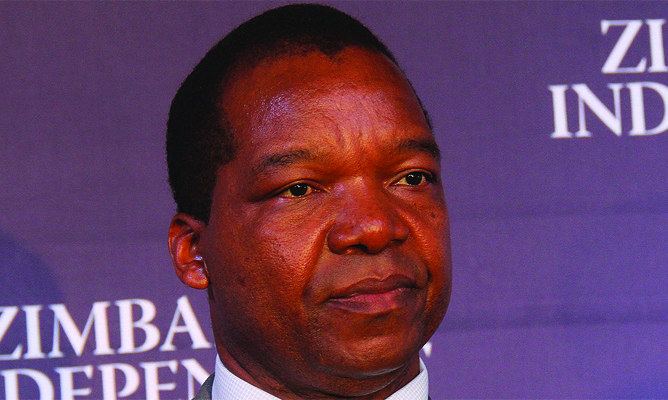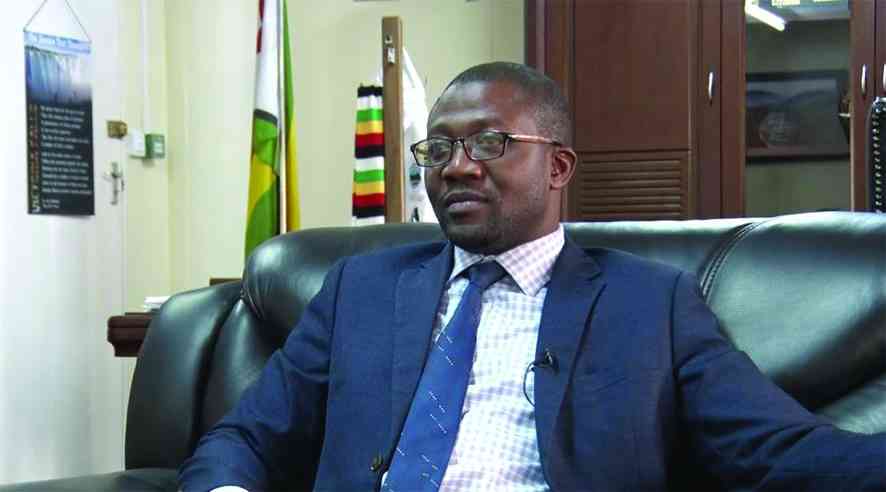
SOMETIME last year, a local financial institution requested me to do a study on the macro-economic impact of the introduction of bond notes. It was an eye-opening engagement. My conclusion then was: “While the export incentive facility monetised through bond notes was introduced ostensibly to preserve local liquidity by plugging leakages/countering externalisation of cash, to incentivise exporters and to manage demand for hard currency in the absence of a local currency, it also appears to have the role of laying the groundwork for the eventual reintroduction of a local currency.” I haven’t changed my mind and, in fact, recent developments on the ground appear to collaborate this view.
Financial Sector Spotlight: OMEN MUZA
Local currency — A question of “when” not “if”
That the local currency will eventually come back has never been in doubt — it’s a question of “when” not “if”. Apparently, as far as this agenda goes, the government has decided not to go for the “big bang approach” opting instead for an incremental/evolutionary approach. Given that any mention of the re-introduction of the Zim dollar elicits a neurotic response from the long-suffering public, the monetary authorities’ trick has been to continue reaffirming the existence of the multi-currency regime, which, as we now know, exists in name only and should actually be called the uni/mono-currency system on account of the US dollar’s dominance. The monetary authorities have also accompanied this lip service to the multi-currency regime with a slow-but-sure increase in the stock of bond notes in circulation in order to neutralise US dollar hegemony. Currency management is part of economics so it is supposed to be a science, right? In Zimbabwe it has largely become a psychological issue- a game of hide and seek.
Working very hard quietly
Since dollarisation, the US dollar had grown to account for 95% of transactional activity at the expense of all other currencies in the multi-currency basket. Instead of engendering policies that diversify exposure to one currency by encouraging the increased usage of other currencies, we have actually been the propping up of one currency — the bond note — (by increasing its quantity in circulation, maintaining an artificial exchange rate of 1:1 and progressively importing less US dollar notes). Yet paradoxically, the increase of the bond notes does not worry Zimbabweans, as it should because everyone had hoped they would assuage the cash shortages. Meanwhile, Reserve Bank of Zimbabwe governor, John Mangudya has two main tools to achieve the increase in bond notes — he can either increase the size of the Afreximbank facility which supposedly backs the bond notes, or he can increase the quantum of the export incentive in percentage terms. He has utilised both avenues in the recent monetary policy statement. My view is that the monetary authorities are working very hard but quietly in order create conditions for the soft landing of the local currency. The reality is that there will be no Big Bang announcement to the effect that the authorities are now preparing for the return of the local currency — it will be done stealthily and we will wake up to wonder why we didn’t see it coming.
Chakravarti’s epiphany
In the recent past, we have heard utterances that confirm that the local currency project is well and truly on course. Ashok Chakravarti recently revealed that bond notes were likely to end up accounting for up to 50% of the money in circulation by year-end, given their current dominance in both the formal and informal markets. Further, he called for authorities to let the market determine the true value of bond notes. Well and good, but if you strip the bond notes of the veneer of strength reposed in them by their fixed exchange rate to the US dollar, what remains? You can call it whatever you like — local dollars, bollars or “dollar in Zimbabwe”, but the fact of the matter is that it becomes a local currency. “Accept the bond dollar is now a local currency and allow it to trade freely with other currencies within multi-currency basket,” says Chakravarti.
- Chamisa under fire over US$120K donation
- Mavhunga puts DeMbare into Chibuku quarterfinals
- Pension funds bet on Cabora Bassa oilfields
- Councils defy govt fire tender directive
Keep Reading
Grand plan well and truly on course
The fact that Chakravarti, who made the observation and gave the piece of advice, is an advisor to the government means that there is a good chance that his advice will conveniently be taken seriously. Sooner or later, this may vindicate those of us who have always felt that the RBZ and government were just bidding their time and would eventually spring a local currency surprise on everyone. During the same week of Chakravarti’s epiphany, Vice-President Emmerson Mnangagwa stoked the fires by confirming that the local currency would certainly be introduced, although he declined to disclose when that was likely to be. He, however, dropped a hint by stating that “our own currency” would come back when the mineral reserves to back it had reached the desired levels. Clearly, the grand plan is well and truly on course. On a related note, Macroeconomic and Financial Management Institute of Eastern and Southern Africa (MEFMI) executive director, Caleb Fundanga urged Zimbabwe to make a clear and final decision on the currency issue to halt the prevailing liquidity crisis. Although the government appears to be holding its cards close to its chest and is secretive about its plans, Fundanga urges the authorities to be consensual in their approach. “For the currency option to be agreed on, there should be national consensus by all key stakeholders as to how to move forward,” he said.
Governor’s recent language instructive
Lately, the RBZ governor’s diction has been instructive. In the recent monetary policy statement for instance, he talks about, “the disequilibrium or mismatch between the domestic quantity of money (local dollars) and the supply of foreign currency (foreign dollars) that cause cash shortages and resultantly the scarcity premiums and multi-pricing system. This means that the market views the intrinsic value of the dollar in Zimbabwe being lower than the foreign dollar.” And all along, we thought that the bond notes were supposed to be equal to US dollars?
Notice how Mangudya cleverly also talks about “the dollar in Zimbabwe.” What’s a dollar in Zimbabwe if it is not a Zimbabwe dollar? Instead of being livid that his fixed rate between the bond note and the US dollar is being undermined and violated by parallel market traders and vowing that he will “crush them” (through legal means of course), he is ready to rationalise the situation by offering an explanation. “It is the discrepancy or mismatch between the supply and demand for foreign exchange, in a dollarised Zimbabwean economy, that cause cash shortages and scarcity premiums of between 5 to 25% in the informal or parallel markets,” he declares helpfully. The governor goes on to reiterate that, “the multi-currency system … is here to stay up until the economic fundamentals for the return of the local currency have been attained.” Most reassuring indeed, but it is clear that one of the currencies in that regime has already become a local currency that answers to the name bond notes.
Mangudya might not be the most articulate governor we have had the privilege of knowing, but if the way he has gone about this bond note business is anything to go by, he might well be the one with the most incisive mind. The difference is that while former governor, Gideon Gono, before him, appeared to only know how to print and throw money at every problem, Mangudya appears to have mastered the art of how to print without actually appearing to be doing so. As for the other governors before him, well, they lived in times when printing was normal in the ordinary course of business. However, Mangudya must not get carried away and begin to think that no one sees through this fog.
Omen N Muza, a banker, is the Founder and Editor of the MFSB. You can view his LinkedIn profile at zw.linkedin.com/pub/omen-n-muza/30/641/3b8 or initiate contact on [email protected].











